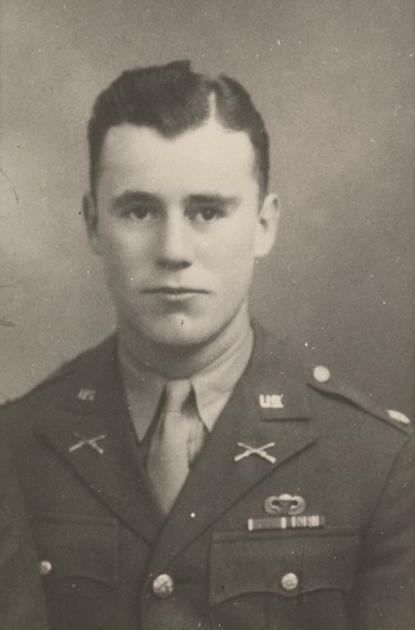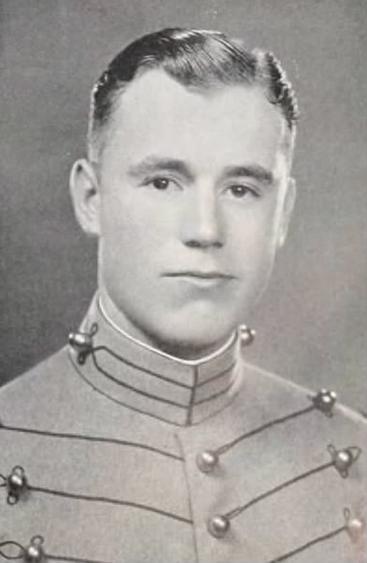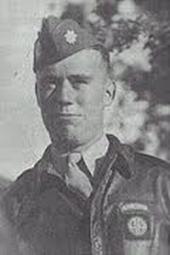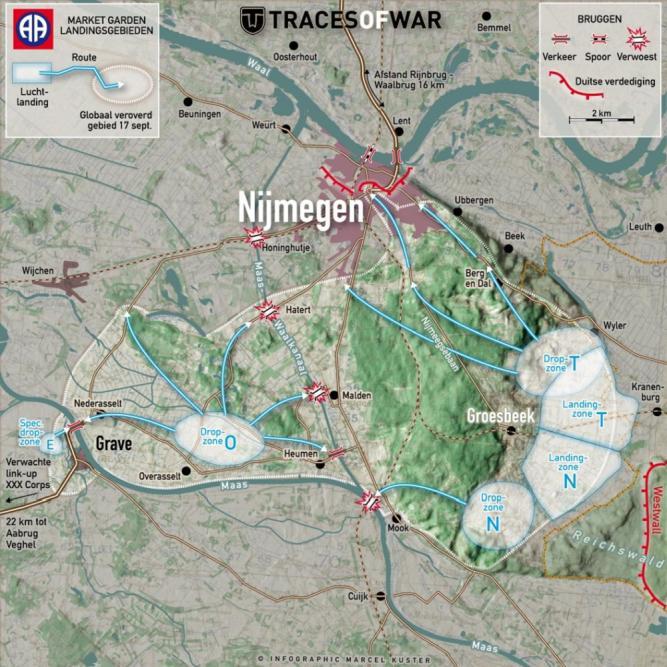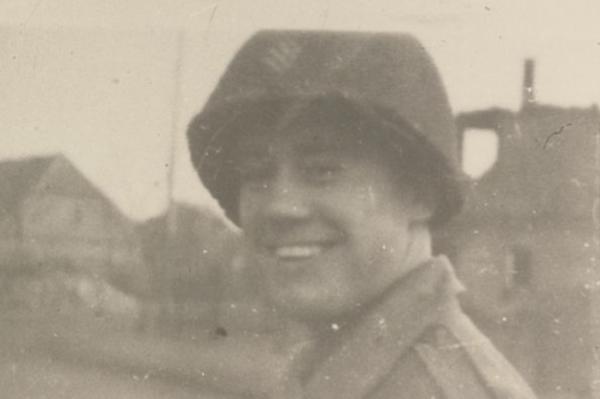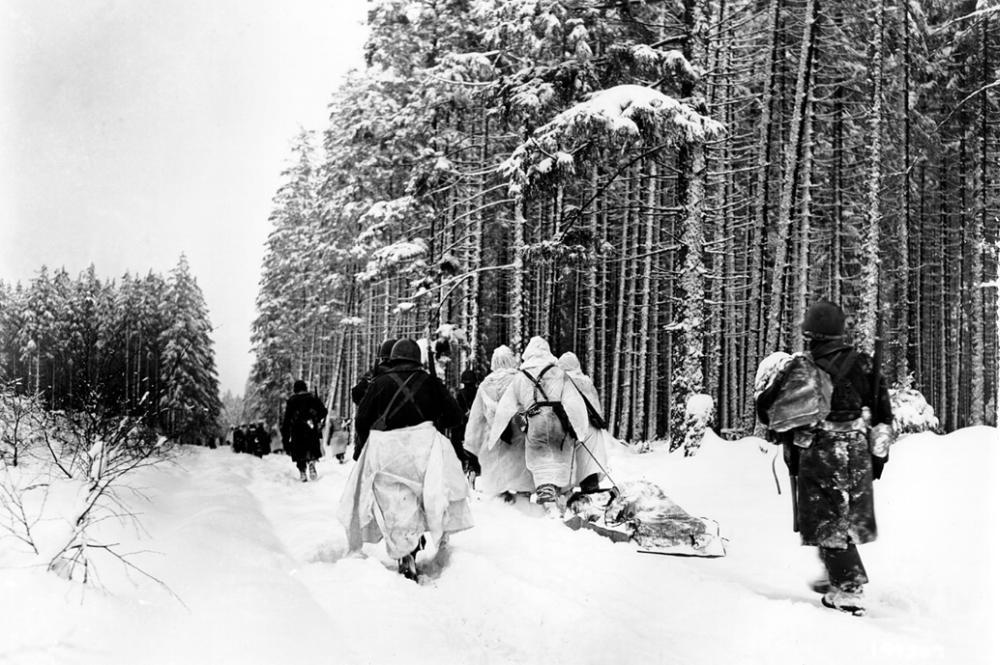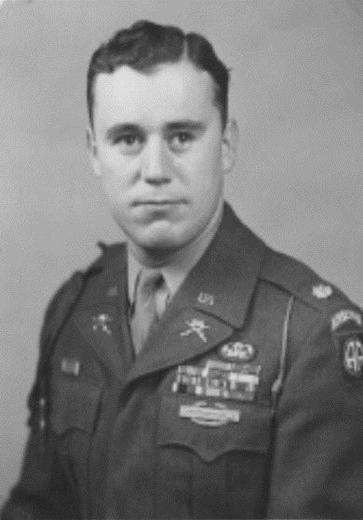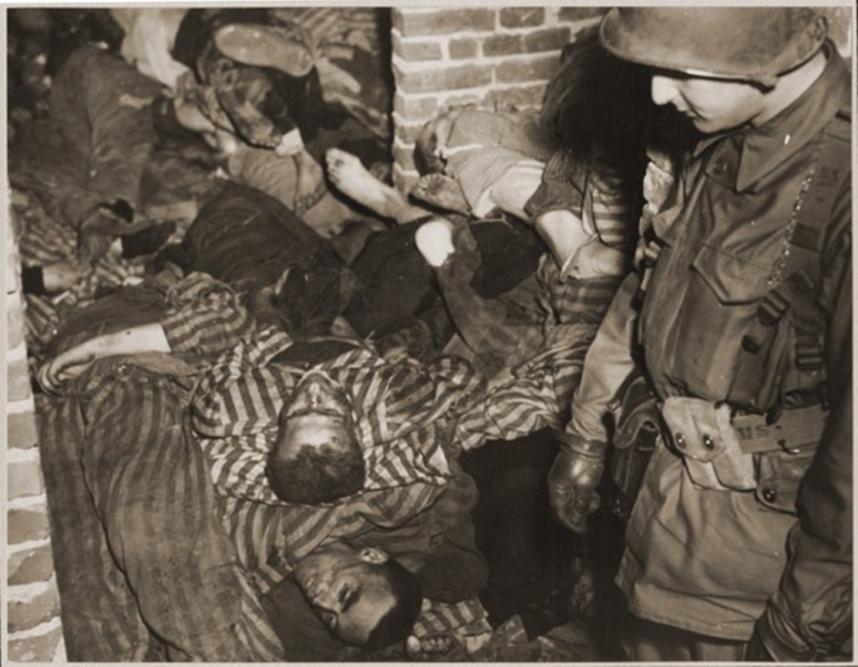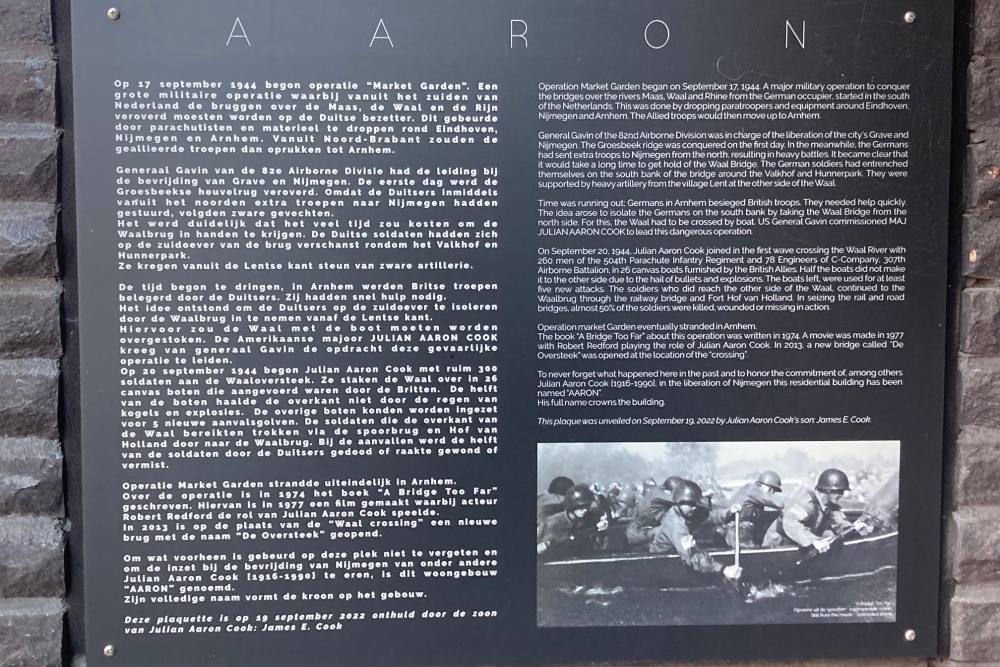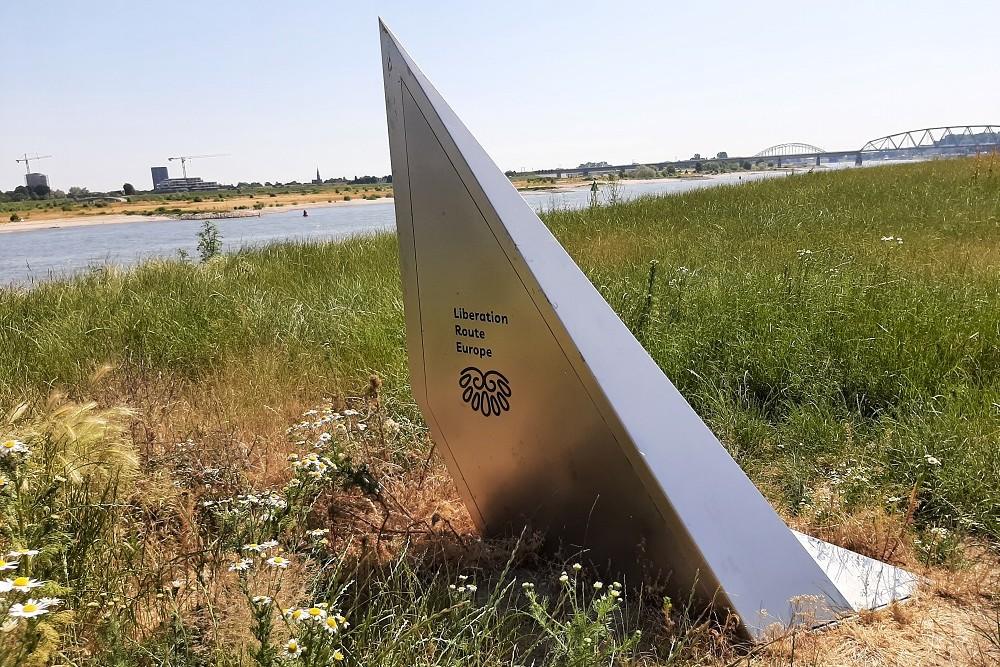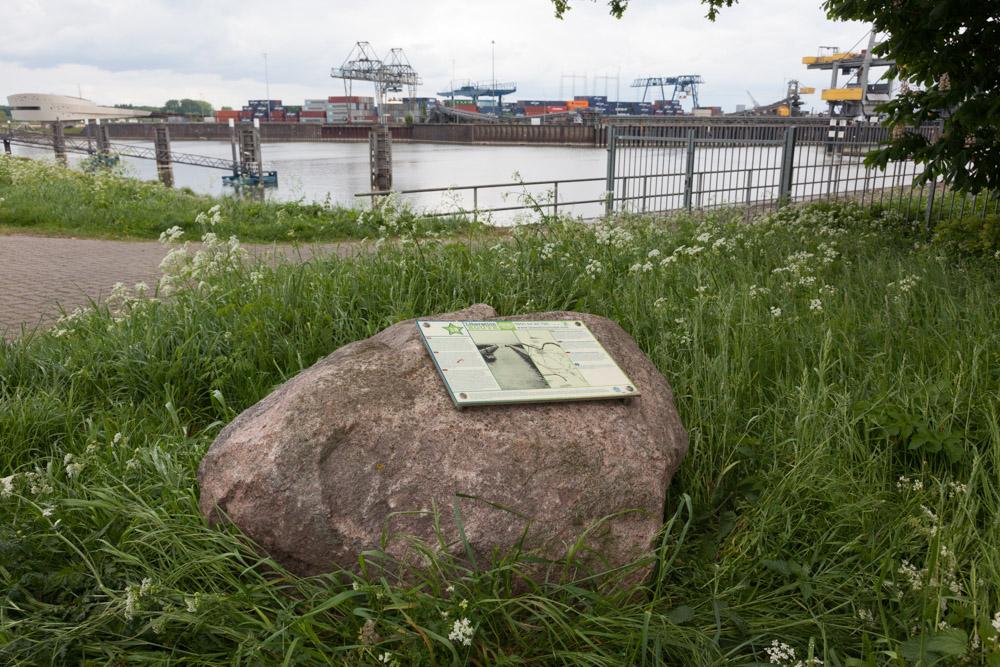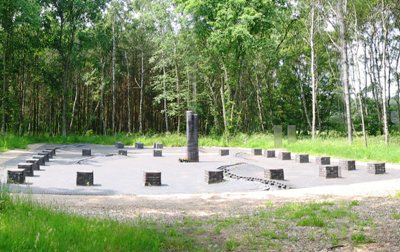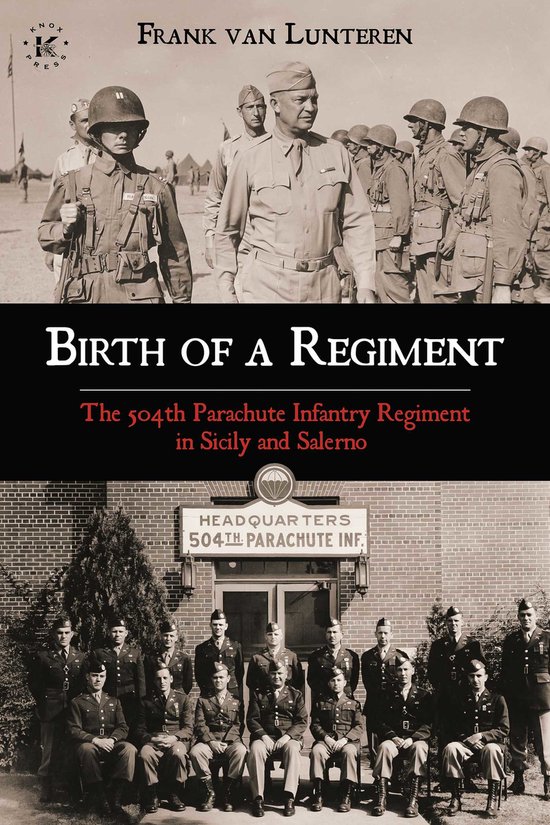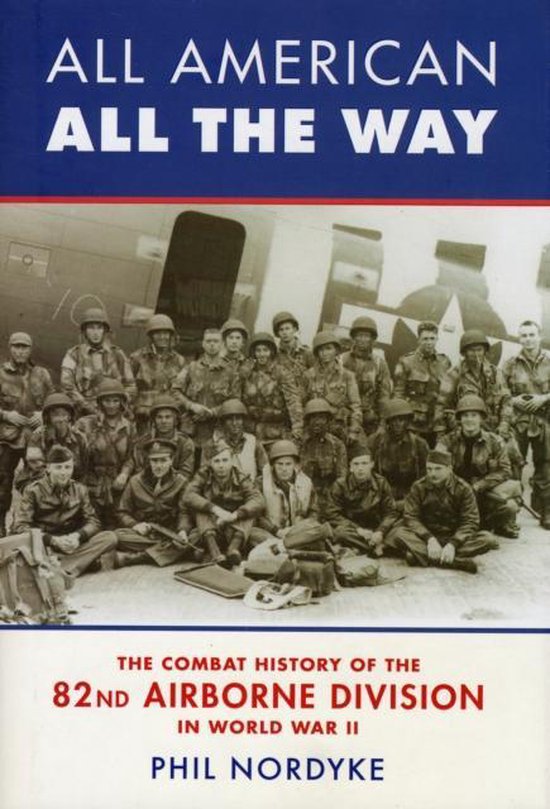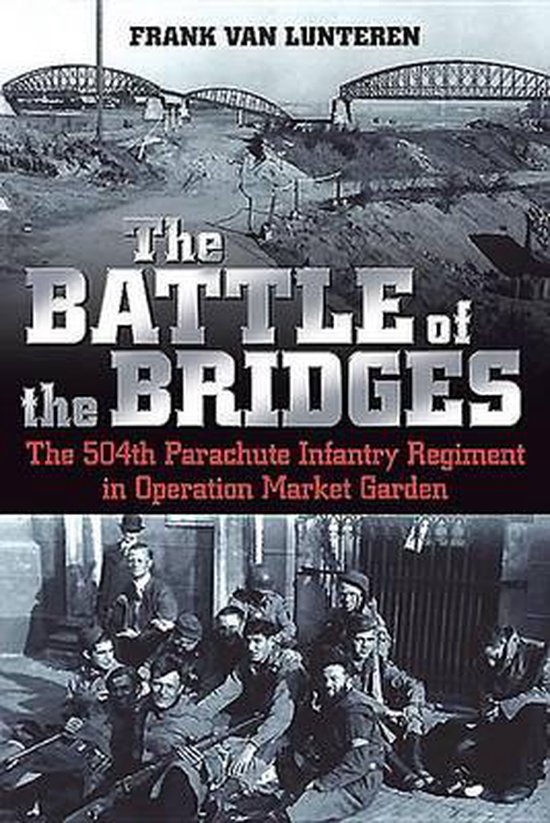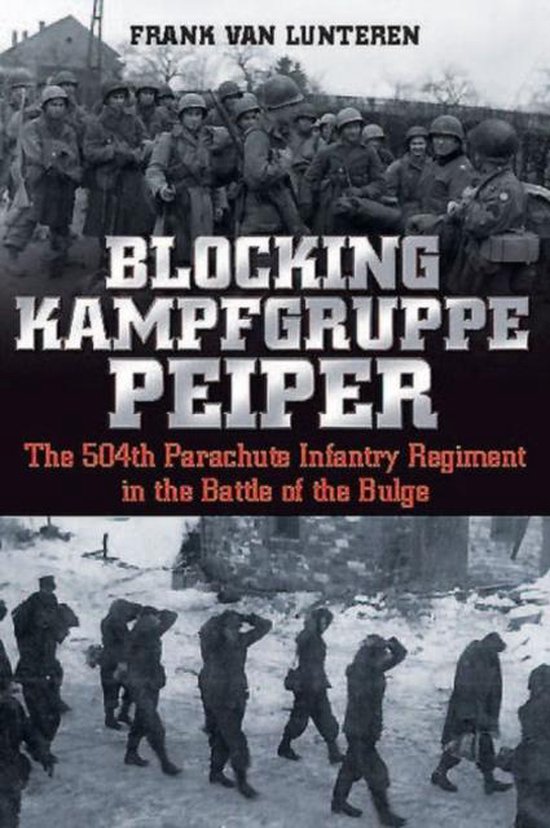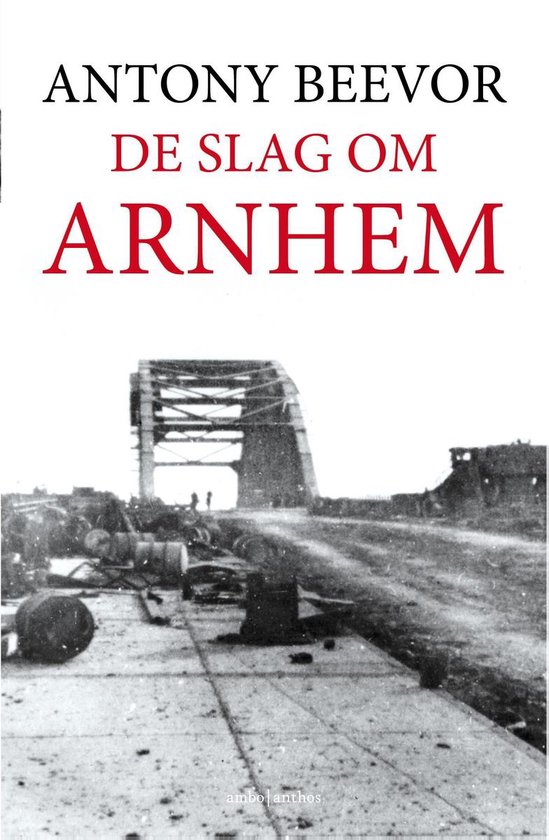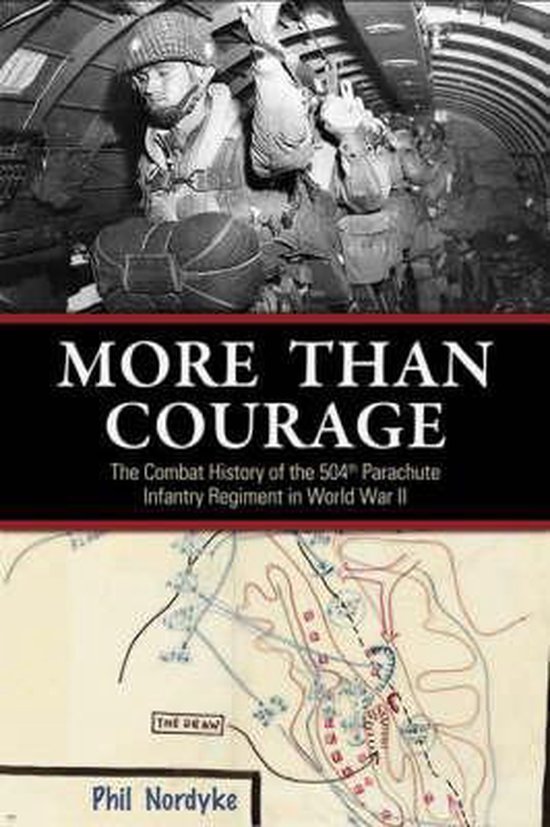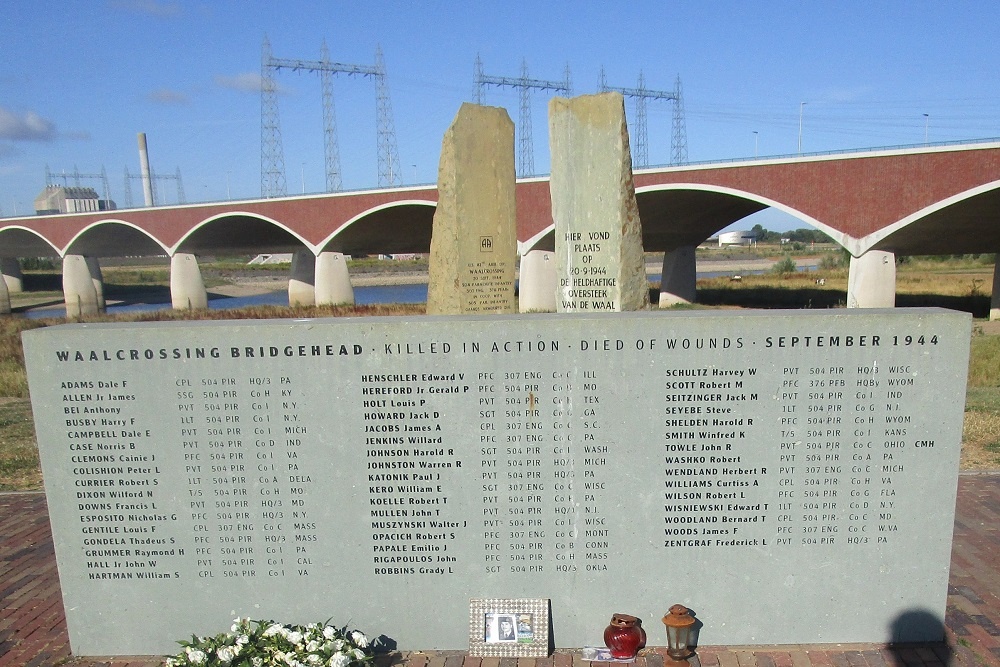Introduction
Julian Aaron Cook became known to the general public as the 27-year old major who, as commanding officer 3rd Battalion, 504th Parachute Infantry Regiment (PIR), 82nd Airborne Division, led the daring boat crossing over the river Waal near Nijmegen on September 20, 1944. This heroic action enabled the battalion to eventually secure, after heavy fighting, the northern approaches of the two bridges across that river, which came under allied control in the early evening that day. In the movie classic ‘A Bridge Too Far’ (1977) Robert Redford portrayed Julian’s role while crossing the river. Relatively little else became known about this brave officer. This article describes the live and foremost the military career of Colonel Julian A. Cook.
Definitielijst
- Regiment
- Part of a division. A division divided into a number of regiments. In the army traditionally the name of the major organised unit of one type of weapon.
Before the war
Julian Aaron Cook was born on October 7, 1916, in Mount Holly, Rutland County, Vermont, in the United States of America (USA). His father Nelson Pingrey Cook met his British wife, Honora Gallagher, during one of his business trips to England. Julian was the youngest child and had five brothers and three sisters.
On July 1, 1936, he started his military carrier as a cadet at the United States Military Academy West Point. He graduated there in 1940 and was assigned as 2nd lieutenant Infantry to the 9th Division at Fort Bragg, North Carolina. In 1941 he volunteered for the just recently formed Airborne Forces, which were taking their tentative steps. In October of that year he was promoted to 1st lieutenant.
The war begins
The United States (US) were dragged into World War II on December 7, 1941, after the Japanese surprise attack on Pearl Harbor. Two months later, in February, 1942, the 504th Parachute Infantry Regiment (PIR) was formed and became operational on May 1st at Fort Benning, Georgia. The regiment constituted the 1st Battalion (Able, Baker and Charlie companies), the 2nd Battalion (Dog, Easy and Fox companies) and the 3rd Battalion (George, How and Item companies). Julian Cook, who successfully finished his parachute training in March, was assigned to the 504th PIR as regimental adjutant, becoming responsible for personnel matters within the regiment (section S1). On June 11, 1942, he was promoted to captain. Around the same time our new trooper got the job of executive officer (XO) 3rd Battalion and therewith became the second-in-command (2iC), also known as the deputy commander, of this battalion.
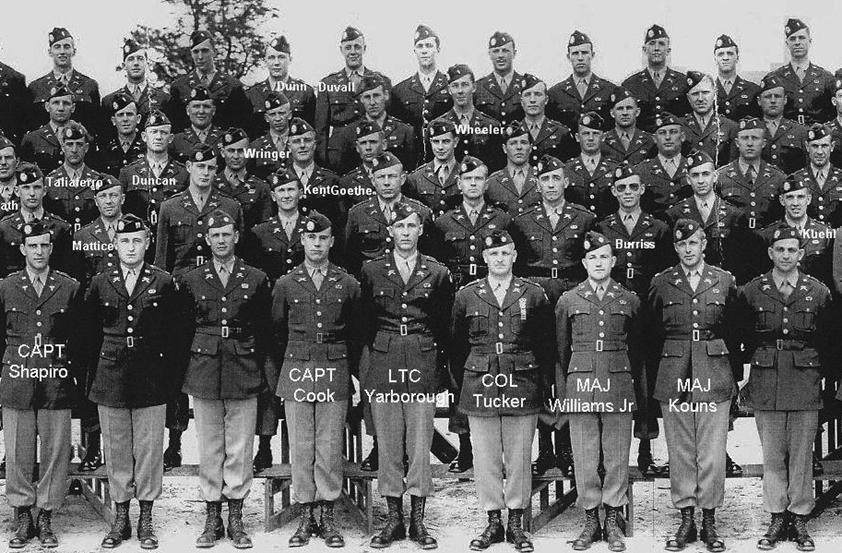
Captain Julian Cook, in front 4th from left, in January 1943, with the officers of the 504th Parachute Infantry Regiment, 82nd Airborne Division. Source: ww2-airborne.us
When the 504th PIR completed its regimental training, it was the first unit to be placed under the command of the 82nd Airborne Division, All American, that became operational on August 15, 1942. On September 30, Julian moved, to Fort Bragg, with the 82nd Airborne Division. Then, a series of intensive training started, in preparation for the deployment of the regiment, to the Mediterranean Theater of Operations. Julian was promoted to major on March 8, 1943, and became the head of section S4 (logistics) of the regiment. In the second half of April, 1943, our fresh major sailed on a transport ship to Casablanca, French Marocco with his regiment where he arrived on May 10th. His unit set up camp in the vicinity of Oujda and Kairouan, as further preparations for its first operation were conducted.

Paratroopers of the 82nd Airborne Division boarding an aircraft for a test drop during the invasion training in Oujda, Frensh Marocco, June 2, 1943. Source: U.S. National Archives
Definitielijst
- Regiment
- Part of a division. A division divided into a number of regiments. In the army traditionally the name of the major organised unit of one type of weapon.
- trooper
- Short for paratrooper.
In Italy
The first combat jump: Sicily, Italy
On the night of 9 - 10 July, 1943, the 3rd Battalion, 504th Parachute Infantry Regiment, together with the 505th Parachute Infantry Regiment of Colonel James Gavin, jumped over Sicily during operation Husky. When the rest of the 504th PIR deployed over Sicily, on the night of 11 - 12 July, tragedy struck the regiment. 23 out of 144 transport aircraft (mostly C-47 Dakota) were downed by anti-aircraft fire from allied navy ships and dispositions on the beach, while others were severely damaged. The two battalions, the 1st and 2nd, and the regimental staff suffered heavy losses. The estimated losses ran between 229 and 410 casualties (dead and wounded). Our major flew in the same airplane as Colonel Tucker, 504th PIR’s commanding officer (CO). In this incident, just before jumping, Julian got hit by shrapnel in his side and one of his thighs. Tucker got injured too, although only slightly. The remaining paratroopers jumped at will and landed widely dispersed across the drop zones on the island. Despite, or rather thanks to, the accidental dispersal, the troopers of the 504th PIR, joined up in small groups and were able to disrupt the enemy defenses, which was to be a deciding factor for the success of the operation. It enabled the unhindered amphibious landing by the allied forces on the southside of the island. Sicily was liberated on August 16, 1943. Cook returned, with the 504th PIR, to French Marocco to recuperate and prepare for the second combat jump of the unit. In early September the units of the 82nd Airborne Division were all transported to Sicily for their next operation.
The second combat jump: Salerno, Italy
On September 9, 1943, operation Avalanche commenced, the allied landing on the Italian mainland near Salerno. The following ground offensive however, encountered a fierce resistance by the Axis-troops and bogged down. The units of the 82nd Airborne Division were deployed on several locations to assist the ground forces of the 5th Army to regain the momentum. In the night of 13 – 14 September, 1943, the 504th PIR jumped in the bridgehead near Salerno.
Julian had recovered sufficiently from his wounds and jumped, as an extra officer added to the regimental staff, above Salerno. The 504th Parachute Infantry Regiment, without its 3rd Battalion, was dropped near Paestum and had to seize several hills that had a direct view on the landing beaches near Salerno. While Colonel Tucker and some staff officers went forward to lead the battle, Cook stayed behind to manage the regimental command post. The two hills, near Altavilla and Albanelle, were eventually seized on September 17, 1943, by the 504th PIR after fierce fighting. A few days later, on September 20, the regiment was relieved. It had suffered 22 dead and 150 wounded. When Julian, together with the soldiers of the 504th PIR, entered Naples on October 1, 1943, the final objective of operation Avalanche was reached.
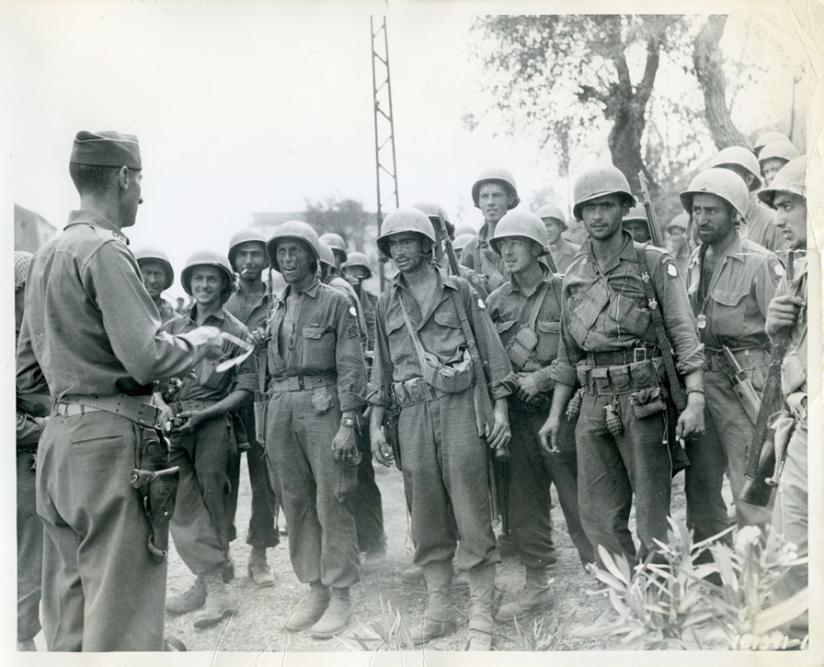
On September 28, 1943, Lieutenant-General Mark W. Clark, commander 5th Army, congratulates the men of the 82nd Airborne Division after their victory in Salerno, Italy. Source: U.S. National Archives
After a following short recuperation period, the regiment was then deployed as mountain infantry north of Naples in the direction of Rome. The other regiments of the 82nd Airborne Division, including the 505th PIR of Colonel James Gavin, were withdrawn from the theatre of operations. They left via North-Africa, for England to prepare for the landing operation in Normandy.
Third mission, no combat jump though: Anzio, Italy
After two months the 504th PIR was relieved and withdrawn from the frontline, to recover and resupply in preparation for the amphibious landing near Anzio, operation Shingle. On January 22, 1944, Cook and his regiment were put ashore by landing craft near Anzio. They were ordered to take positions along the Mussolini Canal, in full view of enemy artillery observers. As an aggressive form of defense, the regiment started a series of combat patrols to disrupt the enemy. However, the Germans had strengthened their positions around the bridgehead. An German counterattack on the 504th PIR’s sector was repelled, inflicting heavy losses on the enemy. The battle turned into a stale mate. After 63 days near Anzio, the regiment was pulled from the frontline. The unit was severely weakened due to high personnel losses caused by the ceaseless enemy artillery fire, countless combat patrols and many German attacks. On April 10, 1944, Julian, with the 504th PIR, left Italy and returned to the fold of the 82nd Airborne Division in England on April 22nd.
Normandy?
In the run up period to operation Overlord it became clear that the number of newly trained paratroopers was too low to replace all the men lost by 504th PIR. Therefore, it was decided that the regiment would not take part in the airborne landing operations in Normandy. Only a few dozen troopers from the regiment were to be deployed as pathfinders. Julian Cook wasn’t one of them and stayed behind in England. He had just begun as commanding officer of 3rd Battalion, 504th Parachute Infantry Regiment. The regiment had to recover, received replacements to compensate for the losses suffered in Italy, and had to train as preparation for the next deployment.
Definitielijst
- Regiment
- Part of a division. A division divided into a number of regiments. In the army traditionally the name of the major organised unit of one type of weapon.
- resistance
- Resistance against the enemy. Often also with armed resources.
The third combat jump: operation Market Garden
During operation Market Garden, the main objective for the 82nd Airborne Division was to seize a number of bridges in and around Nijmegen to enable the ground forces from XXX Corps to reach the British Airborne Division which had to capture the bridge over the river Rijn at Arnhem. The road and railroad bridges were two of the most important bridges across the river Waal. The 504th Parachute Infantry Regiment was ordered to seize the bridge over the river Maas near Grave and the four bridges across the Maas-Waal canal intact. The 3rd Battalion from our major was to secure the left (west) flank of the regiment (in the direction of Wijchen and the land of Maas and Waal) and was also to act as the regimental reserve. This would be the third combat jump for Julian and his battalion, however, one thing was different: this time they had to jump in broad daylight and not at night like the previous two times.
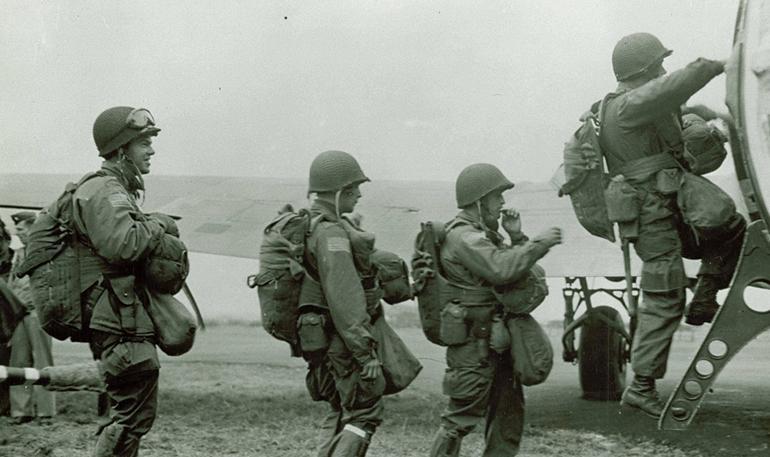
US airborne troopers board a C-47 for their combat jump in the Netherlands during operation Market Garden. Source: U.S. Army
On September 15, 1944, the 504th PIR was on highest state of readiness and all leave passes were withdrawn. The regiment was moved to two different airfields, Cook’s 3rd Battalion, together with the 2nd Battalion, was transferred to Spanhoe. The rest of the regiment was transported to Cottesmore. On Sunday, September 17, 1944, Julian and his unit took off from Spanhoe. His battalion would be in the first wave of the regiment to jump in drop zone O near Overasselt. Then his companies were to move in a westerly direction to secure the highway from Grave via Alverna to Nijmegen. In the meantime the 2nd Battalion would seize the bridge across the river Maas at Grave while the 1st Battalion was to seize the four bridges across the Maas-Waal canal. The latter succeeded partly: the bridge with code number 10 (“Honinghutje”), consisted of two different bridges; the railroad bridge was blown and the adjacent road bridge was damaged in the process. The bridge with code number 8 (near Malden) was blown up too. Still, the 504th PIR succeeded mostly in achieving its goals. In the afternoon of September 18, 1944, a Dutch commando from No.2 Dutch Troop, named corporal Valentijn Kokhuis, would be assigned to the battalion staff of our major, to act as interpreter and guide.
In the afternoon of September 19, our major’s 3rd Battalion had gotten the role of divisional reserve for the 82nd Airborne Division. This meant that the unit was at the disposal of the Division Commanding Officer (General James Gavin), who could decide where and when the unit was to be deployed and in what role. Cook moved with his battalion, via bridge with code number 7 (near Heumen), to the southern suburbs of Nijmegen. That night his battalion made bivouac in the Jonkerbosch. That evening Julian received the order from General Gavin to go looking for boats, because the following day his unit was to conduct a river crossing. Initially Gavin ordered our major to search for boats from the local population. Meanwhile Gavin had also passed the request for boats to his British counterparts. This resulted in the commanding officer of the British Engineers/Sappers units, who received the request on the early morning of September 20, to immediately issue the order to move boats from a supply dump in Belgium to Nijmegen.
At 15.00 hours that afternoon, the famous river crossing kicked off, led by our Major Julian Cook. With 26 flimsy boats he, with his battalion staff and companies H and I, crossed the river Waal in the first wave under murderous enemy fire. As portrayed by Robert Redford in the movie classic ‘A Bridge Too Far’, Julian Cook crossed the river while continuously praying out loud “Hail Mary, full of grace”. His 3rd Battalion suffered heavy losses and only 11 of the 26 boats remained and were able to get back and pick up the rest of the battalion. Thereafter the 1st Battalion and the regimental staff of 504th PIR crossed the river in several waves. In the next hours Cook’s troopers first neutralized fort Holland and then gained access to the railroad bridge and subsequently seized the northern approach and ramp of the road bridge of Nijmegen.
Meanwhile the 2nd Battalion, 505th Parachute Infantry Regiment, led by Lieutenant Colonel Benjamin Vandervoort, together with tanks from the British Guards Division, captured the southern approaches of both bridges. Around 19.00 hours that evening, both bridges across the river Waal were in the hands of the Allies when the first tanks crossed the road bridge.
Because of his steadfast conduct and inspiring leadership during and following the river crossing, Julian gained tremendous respect amongst his troopers, non-commissioned and commissioned officers. He would thereafter be revered by his men. For his heroic conduct during this action, Julian was awarded the Distinguished Service Cross on January 20, 1945, with the following recommendation:
The President of the United States of America, authorized by Act of Congress, July 9, 1918, takes pleasure in presenting the Distinguished Service Cross to Major (Infantry) Julian Aaron Cook (ASN: 0-23290), United States Army, for extraordinary heroism in connection with military operations against an armed enemy while serving as Commanding Officer, 3d Battalion, 504th Parachute Infantry Regiment, 82d Airborne Division, in action against enemy forces on 20 September, 1944, near Nijmegen, Holland. Major Cook led his battalion with unparalleled bravery in the initial assault wave during the daring daylight crossing of the Waal River. Although his boatload suffered heavy casualties as a result of the incessant enemy small arms and artillery fire which raked the 250 yard wide stream, he guided the barge safely ashore. Although still under heavy fire, Major Cook remained on the river bank directing the remainder of his battalion coming ashore. On several occasions he plunged back into the river to pull damaged boats ashore and to care for the wounded. During the crossing heavy casualties were suffered, but Major Cook quickly reorganized the remainder of his battalion and led it successfully from objective to objective during the 4000-yard attack, until the north end of the Nijmegen bridge was reached and seized. Major Cook's thoroughness in effecting rapid reorganization and consolidation after the seizure of each intermediate objective was highly instrumental in the success of the entire operation. Major Cook's inspiring leadership, personal bravery and zealous devotion to duty exemplify the highest traditions of the military forces of the United States and reflect great credit upon himself, the 82d Airborne Division, and the United States Army.
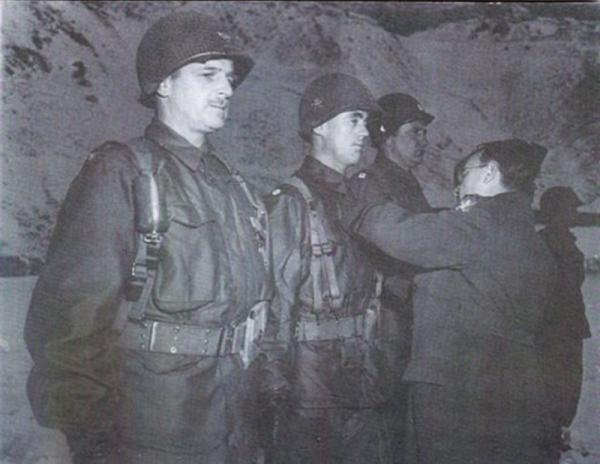
Lieutenant Colonel Julian Cook (2nd from the left) received the Distinguished Service Cross on January 20, 1945, in Remouchamps (Belgium). Next to him (1st from the left) stands Colonel Reuben Tucker, his regimental commanding officer, who also received the same medal. Source: U.S. National Archives
During the battles of the 82nd Airborne Division in the area of NIJMEGEN in the period of 17 September until 4 October 1944, he distinguished himself by conducting excellent deeds of bravery, leadership and loyalty. His extraordinary devotion to duty and great perseverance were a highly commendable example and an inspiration for all in those glorious days.
Until their relief on September 22nd, Cook and his battalion were entangled in heavy fighting north of the river Waal, especially in and around Lent. Then, they were redeployed to the south of the river. After a short time of rest in an assembly area near Dekkerswald, Julian and his men, together with the other units of the 504th PIR, deployed on September 24, 1944, to defend the eastern flank of Nijmegen. His troops would be involved in several battles, and some patrols of his companies were to conduct reconnaissance even up to Cleve (Germany). On November 14, 1944, Cook’s 3rd Battalion as part of the 504th Parachute Infantry Regiment, was relieved by the 8th Infantry Brigade from the Canadian 3rd Infantry Division. Like all other units from the 82nd Airborne Division, Cook with his battalion were transported to Northern France to recuperate. The division lost 1.400 men (dead and wounded) from the 7.200+ troopers who kicked off the operation near Nijmegen in mid-September 1944.
Definitielijst
- Brigade
- Consisted mostly of two or more regiments. Could operate independently or as part of a division. Sometimes they were part of a corps instead of a division. In theory a brigade consisted of 5,000 to 7,000 men.
- mid
- Military intelligence service.
- Regiment
- Part of a division. A division divided into a number of regiments. In the army traditionally the name of the major organised unit of one type of weapon.
A cold Christmas, the Belgium Ardennes
The units from the 82nd Airborne Division were accommodated as of mid-November 1944 in several old barracks near Reims (France). The 504th PIR of Colonel Tucker, with Cook’s battalion, were lodged in Sissonne, some 25 miles north-northwest of Reims. They arrived on November 16, 1944. The troopers could recuperate for a while. A small group of non-commissioned officers, led by 1st Lieutenant Megellas from company H, were sent to England to prepare 250 paratrooper replacements and train these based on recent experiences of the battlefield. These new guys only had two weeks of para-training, although with the five mandatory jumps. On November 24, 1944, Julian was promoted to lieutenant colonel.
Just before dawn on Saturday December 16, 1944, the German counter offensive, named operation “Wacht am Rhein”, kicked off with an artillery barrage across a 65-mile wide front. The Germans intended, by pushing through the Ardennes all the way to Antwerp, to split up the Allied forces. The British and American forces were to be separated. And a division of the allies would free the road for peace negotiations.
The XVIII Airborne Corps, where the 82nd and 101st Airborne Divisions were part of, in the evening of December 17, 1944, received the order to move to the Ardennes within 24 hours. The next morning, when the Allies were finally convinced that the Germans actually started their counter offensive, Julian’s battalion and the 504th Parachute Infantry Regiment were already loading for transport to the Ardennes. Lieutenant Megellas arrived with his 250 replacements just in time in Sissonne. When these were divided amongst the different units of the 504th PIR, at 08.30 hours a role call was held, after which the regiment with Cook’s battalion moved to Werbemont (Belgium). The 82nd Airborne Division was to disrupt the German advance from there, while The 101st Airborne Division was sent to Bastogne to set up a strong defense with the aim to stop the German advance there.
At 20.00 hours on December 18, 1944, the first troops from the 82nd Airborne Division arrived in the vicinity of Werbemont. The 505th PIR immediately was sent to Trois Ponts (literally: three bridges), to deny the Germans the use of the bridges. Kampfgruppe Peiper, the German vanguard, advanced quickly. When the bridges near Trois Ponts were blown, Peiper had to head north in the direction of La Gleize in order to advance on Werbemont. To cross the river Ambleve the bridges near Cheneux were to be seized. The 504th PIR, lacking any sapper capacity to demolish these bridges, had to defend them at all costs.
On the morning of December 20, the 504th PIR moved to Cheneux to seize the bridges across the Ambleve and deny the Germans the use of them. The 1st Battalion advanced first, fought heavily and suffered severe losses; it’s B-company was decimated to only 20 men (no officers left) and C-company to a mere 40 men with 3 officers; all company commanders within the battalion were wounded. In the evening it was decided that Cook’s 3rd Battalion had to take over the conquest of Cheneux from a southernly direction. The 1st Battalion had attacked from a westerly direction. G, H and I-companies advanced and encountered heavy resistance. Colonel Tucker took Cook and together they led their troops from the front line. Later that night Julian’s 3rd Battalion seized the village of Monceau, just south of Cheneux. Then followed the seizure of Cheneux by the 504th PIR.
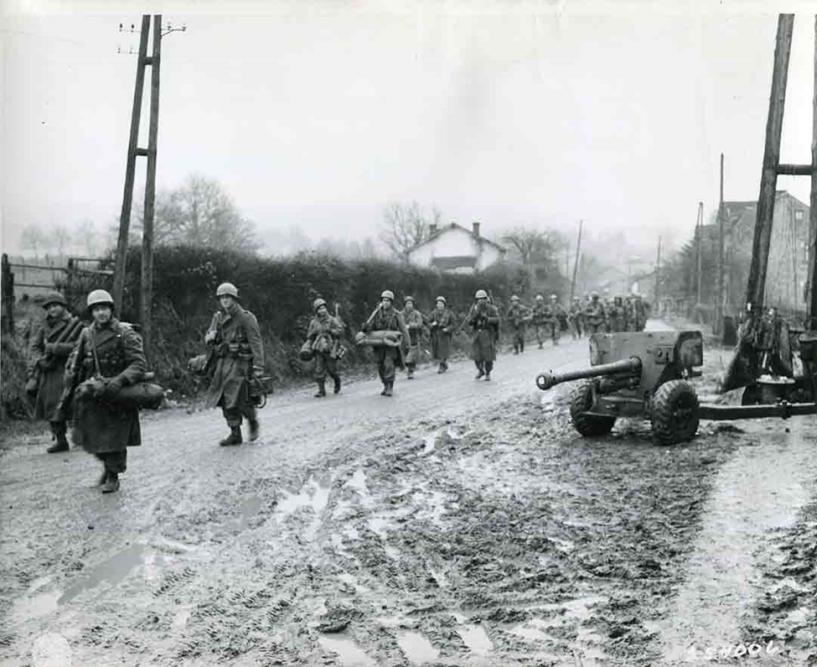
Paratroopers of the 504th PIR on December 22, 1944, walking past a left behind 57mm antitank gun in Cheneux. Source: U.S. National Archives
Although from a tactical point of view a severe loss for Tucker’s 504th, of which the 1st Battalion was decimated with actually only one company left, the conquest was strategically seen a victory. After all, with the capture of Cheneux and Monceau, the advance of Kampfgruppe Peiper was definitely stopped. Peiper suffered severe losses and his troops got isolated. Without ammunition and fuel they were forced to exfiltrate on foot, back to their own troops. Julian’s battalion suffered comparably only small losses: 3 killed and 21 wounded (of which 3 officers); and one trooper captured by the Germans.
The 504th PIR was pulled back to Bra where it stayed in fox holes in defensive positions during the Christmas days. Cook walked by all his men in their fox holes, which was much appreciated by them. Meanwhile Julian had one of his platoons conduct a patrol. It captured a young soldier of the 9th SS Panzer Division, which was bad news. Although this German division was only 3.000 strong, it was the same unit that had defeated the British 1st Airborne Division at Arnhem. Units of this German division launched a counter attack on the defenses of Cook’s 3rd Battalion. It would become the Batlle of Floret. Until December 30, 1944, Julian was in heavy battle with the 9th SS Panzer Division. Then this division was redirected to Bastogne by Generalfeldmarschall von Rundstedt, because more heavy equipment was needed there to fight against the 101st Airborne Division. The 9th SS Panzer Division was relieved by the 560th Volksgrenadier Division. Until January 10, 1945, Cook with his battalion, would first be fighting this unit for a number of days, before capturing the villages Petit and Grand Halleux, with the 504th PIR. This completed the conquest of the west bank of the river Salm that was now totally in Allied hands.
The 504th PIR was then relieved by units of the 75th Infantry Division and was transported by trucks to Remouchamps. The regiment had suffered 447 casualties in the previous weeks: 82 killed in action, 354 wounded and 11 taken prisoner by the Germans. The regiment, with Cook’s men, would then recuperate until January 25, 1945. It was reinforced with the remnants of the recently dissolved American-Canadian First Special Service Force (FSSF). Also men from the dissolved Parachute Field Artillery Battalion were assigned to the 504th PIR.
From 25 to 29 January, 1945, the 504th PIR was deployed to assist in the capture of Herresbach. At Cook’s initiative, his 3rd Battalion would seize the city when another unit was bogged down. The Germans lost 138 men (killed) and 182 were captured; on January 29, Herresbach was captured.
Definitielijst
- Kampfgruppe
- Temporary military formation in the German army, composed of various units such as armoured division, infantry, artillery, anti-tank units and sometimes engineers, with a special assignment on the battlefield. These Kampfgruppen were usually named after the commander.
- mid
- Military intelligence service.
- Regiment
- Part of a division. A division divided into a number of regiments. In the army traditionally the name of the major organised unit of one type of weapon.
- resistance
- Resistance against the enemy. Often also with armed resources.
- trooper
- Short for paratrooper.
Breach of the Siegfried line
In early February, 1945, the attack commenced on the Siegfried line. The 504th PIR was ordered to seize the heights of Mertesrott. This ridge was located east of the Siegfried line and offered a plain view over it. On February 2, the regiment advanced to breach the Siegfried line. Since Cook’s 3rd Battalion had conducted the attack on Herresbach and Berry’s 1st Battalion had led the advance from Holzheim to Manderfeld, both were kept in reserve. The 2nd Battalion had to lead the breach. The attack was launched from an assembly area north of the German border town Losheimergraben. The 2nd Battalion led and suffered heavy losses while attacking the bunkers. Colonel Tucker had come to the front line and seen the severe losses of E-company. He then sent the 1st Battalion up front to open up another attack on the bunkers from the right of F-company. F-company, at high cost, knew to repel a German counter attack. The Americans didn’t know that they were fighting the remnants of the 3rd Fallschirmjäger Division, the 9th Panzer Division and the 18th Volksgrenadier Division. The 2nd Battalion managed to breach the first line of bunkers and finally reached the central part of the Mertesrott Heights, however against severe losses. After some time the 1st Battalion was able to seize control of the southern part of the heights. Cook’s 3rd Battalion was ordered in the morning to approach the objective, the heights, from the north. However, the battalion got stuck in a traffic jam near Neuhof, which was caused by another unit, the 325th Glider Infantry Regiment. Only at 19.30 hours the attack (a pincer movement) by Cook’s battalion could be launched. Reinforced with three medium tanks and seven tank destroyers, Cook was able to seize the northern part of the heights within two hours. The following two days the regiment had to repulse several German counter attacks.
On February 5, 1945, the regiment was relieved and the next day transferred to Petit- and Grand-Halleux. The rest for Cook’s men was only short. His battalion was the least weakened. On February 7, his battalion had to move to Eupen to support the 505th PIR and the 517th PIR which had suffered heavily in the forest of Huertgen. Cook advanced on February 8 with his battalion to the village of Schmidthof. The following day the other units of the 504th PIR were also pulled to Huertgen Forest. The 82nd Airborne Division and other allied units got stuck because of the Germans blowing the Schwammenaueldam in the night of 9 - 10 February, 1945. That caused the flooding of the river Roer of large parts of the forest. On February 19, 1945, the 504th PIR was relieved by a regiment of the 9th Infantry Division. The battle in the Ardennes and the German Eifel was done for Julian’s men and the rest of the 504th PIR. The regiment was transported back to Sissonne where it arrived on February 21, 1945.
Definitielijst
- Fallschirmjäger
- Paratroopers of the German Luftwaffe (air force).
- Fallschirmjäger
- German paratroopers. Part of the Luftwaffe.
- regiment
- Part of a division. A division divided into a number of regiments. In the army traditionally the name of the major organised unit of one type of weapon.
Germany
The following several weeks the 82nd Airborne Division, with Cook’s 3rd Battalion, 504th Parachute Infantry Regiment, could catch its breath in the vicinity of Rheims, as from April 4, 1945, the division was sent back to the frontline. The 82nd was designated to a sector of approximately 10 miles (16 km) around Cologne, on the west bank of the river Rijn. The 505th PIR was positioned south of Cologne while the 504th took defensive positions north of that city. The latter regiment would regularly cross the river by small boats to conduct combat patrols on the east bank of the river Rijn. The intent was to make (fire) contact with the Germans, and if possible, take enemy soldiers prisoner. On April 6 and 7, 1945, men of company A, from 1st Battalion, and of company I, from Cook’s 3rd Battalion, fought a fierce battle near Hitdorf, where a bridgehead east of the river Rijn was formed. It would become one of the bloodiest fights of smaller units during World War II. The deployed airborne companies suffered at least 112 casualties (dead, wounded or missing in action) while the Germans lost 350 men (dead and wounded) and another 80 men who were made prisoners of war by the Americans.
On April 16, 1945, the majority of the 325.000 German soldiers who were surrounded in the Ruhr-area, surrendered. Cook’s men, like those of other allied units, were then confronted with huge numbers of German prisoners of war, but also with approximately 200,000 liberated forced laborers and more than 5.000 liberated prisoners of war. Subsequently, Cook’s battalion had to run police duties in the northern part of the city of Cologne. This meant that military authority had to be preserved, the area had to be cleared of weapons and ammunitions and the starting refugee flow had to be assisted/controlled.
From April 27, 1945, onwards Cook’s battalion, with his regiment, advanced to an area south of Hamburg and then moved eastwards in pursuit of the withdrawing German units. On May 1 Julian’s 3rd Battalion reached the river Elbe near the village of Bleckede. After the 505th PIR had crossed the river in British storm boats and formed a bridgehead, a pontoon bridge was built. Cook and his men crossed the Elbe on May 2, 1945, and pushed further east with the regiment. That same day, the German 21st Army surrendered to the 82nd Airborne Division. Meanwhile Julian’s 3rd Battalion advanced to the northeast and when approaching Ludwigslust it encountered one of the recently set-up concentration camps, Wöbbelin. It would be one of the most shocking experiences for the American troopers. This camp was the front porch of death where several thousands of political prisoners were detained, coming from the Netherlands, Russia, Poland, Greece and Czechoslovakia. Hundreds of bodies were found dispersed across the camp at the arrival of the troopers. Despite the measures taken by the American soldiers to provide nutrition and medical care, the first days after the liberation of the camp, another 200 prisoners died of dysentery and exhaustion.
Definitielijst
- military authority
- Dutch military body with special authority on non-military issues (1944 – 1946).
- Regiment
- Part of a division. A division divided into a number of regiments. In the army traditionally the name of the major organised unit of one type of weapon.
After the war
End of the war
Finally on May 7, 1945, World War II ended. The 82nd Airborne Division with Cook’s 3rd Battalion, 504th Parachute Infantry Regiment, stayed another few weeks in the area of Ludwigslust to screen and guard the German prisoners of war. In early June, 1945, the division was relieved and transferred to Camp Chicago near Laon in France. Here the division took leave of the men (soldiers and cadre) who had earned enough points to be repatriated to the United States. Professional officers, like Julian, had to stay with their unit in Europe anyway. Units then were reorganized and the 504th PIR took in all remaining personnel of the 507th PIR as compensation for the troopers who were allowed to go home. Julian stayed commanding officer 3rd Battalion, 504th Parachute Infantry Regiment.
In the end of July, 1945, the 82nd Airborne Division was ordered to transfer to Berlin, where it arrived in the first week of August after a dayslong train journey. There the division was to be part of the occupation force. From then on, the 504th PIR, with Julian’s battalion, conducted police duties in the ruined former capital of Adolf Hitler, until mid-November, 1945. Starting November 19, the 82nd Airborne Division was relieved and it’s units travelled back to Camp Chicago near Laon, France, to prepare for their home journey by ship to the United States. Just before Christmas the division was transferred to England, where it embarked on the Queen Mary on December 29, 1945, for its travel home. On January 3, 1946, the regiment, with Julian Aaron Cook, had returned to the United States when the ship docked in the harbor of New York.
Back in the United States
On January 12, 1946, the 504th PIR, with our hero, took part in the New York City Victory Parade to celebrate the victory and the end of World War II. The 82nd Airborne Division participated in it with 13.000 men, representing the U.S. Army.
Not much information is known regarding Julian’s activities afterwards. For certain, he stayed in the U.S. Army for years. One source states he was promoted to colonel (a so-called full bird) in early 1946. However, another source states he was posted as executive officer (XO) 505th Parachute Infantry Regiment until March 1947, a job normally held by a lieutenant colonel. He then would be promoted to colonel, probably in 1948, when he had a job in Charlotte, North-Carolina, at the Unit Instruction Organization Reserve Corps. It is certain as well that he was an U.S. liaison officer based with the French forces in the then called Indochina. There he became very ill and spent 8 months to recover in several hospitals. This wasn’t favorable for his further military career. Afterwards, in the late ‘50s, he was the commanding officer 77th Special Forces Group. Subsequently, he held a couple of staff officer postings at international (NATO) headquarters: first in Norfolk at the Commander in Chief Atlantic Command (CINCLANT) and in the ‘60s in Naples, Italy, at the Allied Forces Southern Europe (AFSOUTH). In 1968 he retired from the military and then became member of the Court of Appeal in the State of South Carolina.
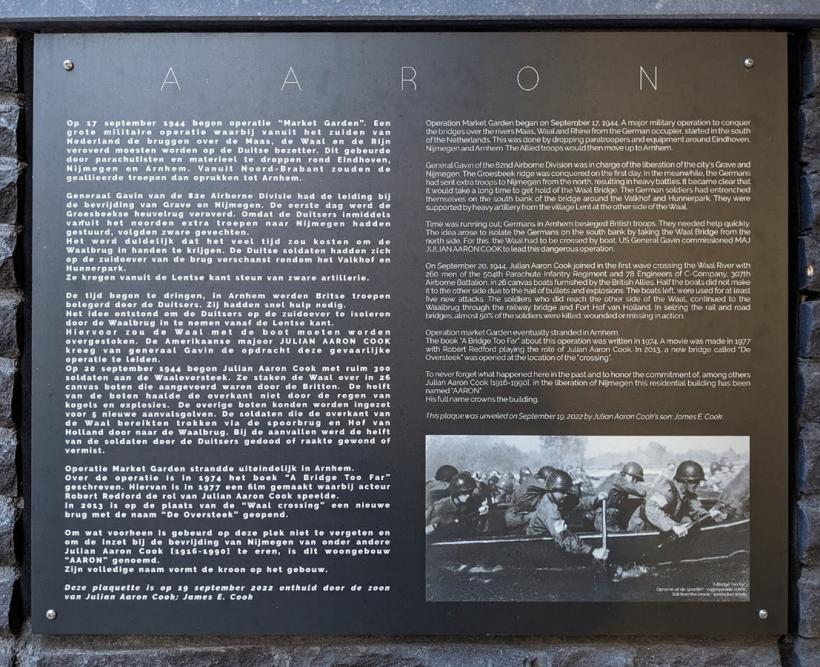
On September 19, 2022, Julian’s eldest son, James E. Cook, revealed this plaque that is attached next to the entrance of the apartment complex named after him, in the Theo Dobbestraat in Nijmegen. Source: Wikipedia, by FakirNL
Regarding his private life it is known that Julian married his loved one, Ruth Mary Flynn, on August 14, 1946. They would get two sons and two daughters. On September 19, 2022, his eldest son, James E. Cook, revealed a plaque attached next to entrance of an apartment complex that was named after his father.
On June 19, 1990, Julian Aaron Cook died, at the age of 73, after a long-term battle with the Parkinson’s disease, in Columbia, Richland County, South Carolina. He is buried at the Pleasant View Cemetery, in Ludlow, Windsor County, Vermont, the United States of America.
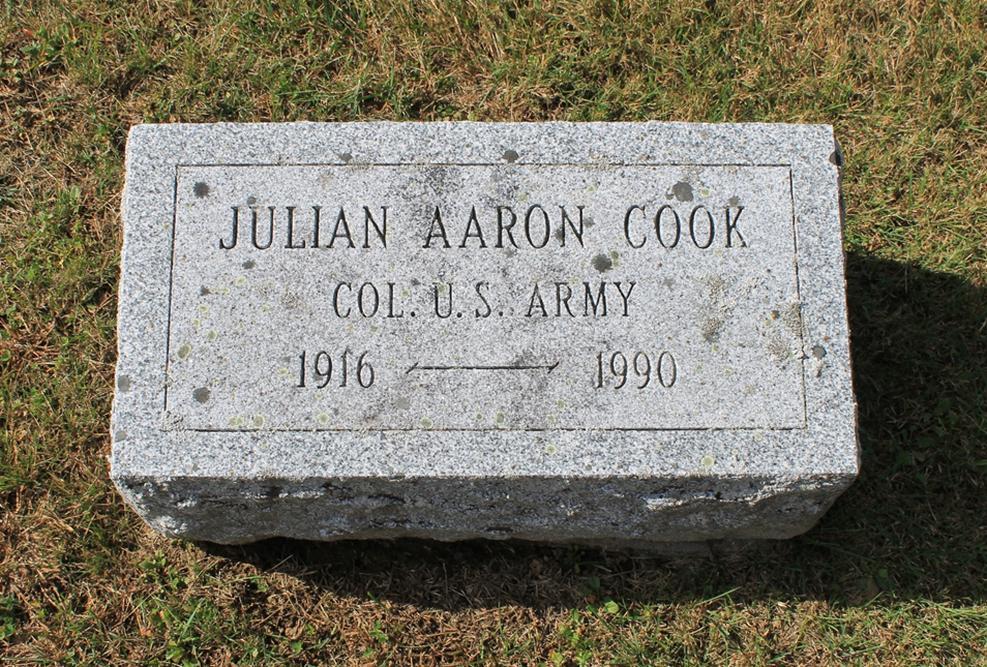
The stone on the grave of Julian Aaron Cook in Pleasant View Cemetery, Ludlow, Vermont. Source: Findagrave.com by Jim Warren
Definitielijst
- mid
- Military intelligence service.
- Regiment
- Part of a division. A division divided into a number of regiments. In the army traditionally the name of the major organised unit of one type of weapon.
Information
- Article by:
- Sjack van der Voort
- Published on:
- 24-05-2025
- Feedback?
- Send it!
Related sights
Related books
Sources
- AMBROSE, S., Van D-day tot Berlijn, Mynx, 2008.
- BEEVOR, A., De Slag om Arnhem, Ambo Anthos, Amsterdam, 2018.
- LUNTEREN, F. VAN, Birth of a Regiment, KNOX Press, New York, 2022.
- LUNTEREN, F. VAN, Blocking Kampfgruppe Peiper, Casemate, Havertown PA, 2015.
- LUNTEREN, F. VAN, The Battle of the Bridges, Casemate, 2017.
- MEGELLAS, J., All the Way to Berlin, Presidio Press, 2004.
- NORDYKE, P., All American All the Way, Zenith Press, St. Paul, United States, 2005.
- NORDYKE, P., More Than Courage, Zenith Press, St. Paul, United States, 2008.
- WHITING, C., Ardennes The Secret War, Spellmount Publishers Ltd, 1996.
- familysearch.org / record G8Z2-T3G
- ww2-airborne.us/units/504
- ww2-airborne.us/units/505
- eu.fayobserver.com/picture-gallery
- 504thpirassociation.org
- valor.militarytimes.com
- usmalibrary.contentdm.oclc.org/digital/collection/howitzers/id/2005/rec/3
- usmalibrary.contentdm.oclc.org/digital/collection/p16919coll3/id/19313/rec/4
- smalibrary.contentdm.oclc.org/digital/collection/p16919coll3/id/21691/rec/2
- usmalibrary.contentdm.oclc.org/digital/collection/assembly/id/24869/rec/1
- tracesofwar.nl/articles/3551/Operatie-Market-Garden
- nieuwsuitnijmegen.nl/Nieuws/12589/plaquette-voor-julian-aaron-cook-onthuld-aan-theo-dobbestraat
- ad.nl/nijmegen/waarom-aaron-een-naam-uit-de-oorlog-die-nooit-vergeten-zal-worden-hij-zou-bescheiden-zijn-geweest
- oorlogsverhalen.com/themas/concentratiekamp-wobbelin
- tracesofwar.nl/sights/5432/Concentratiekamp-Wöbbelin
- tracesofwar.nl/articles/1693/Ardennenoffensief
- tracesofwar.nl/articles/2993/Amerikaanse-82nd-Airborne-Division
- yadvashem.org/holocaust/this-month/may/1945
- encyclopedia.ushmm.org/content/en/photo/bodies-of-prisoners-discovered-in-woebbelin
- findagrave.com/memorial/79489943/julian-aaron-cook
- warfarehistorynetwork.com/article/operation-market-garden-the-82nd-airborne-divisions-pivotal-role
- insigne.org/504
- media.library.ohio.edu/iiif/2/p15808coll15:13715
- media.library.ohio.edu/iiif/2/p15808coll15:13716
- media.library.ohio.edu/digital/collection/p15808coll15/id/13701
- noviomagus.nl/h1.php?p=Gastredactie/Meijer/Eregallerij/Eregallerij
- lifeinthearmy.com/2020/02/04/the-battle-of-the-bulge
- en.wikipedia.org/wiki/New_York_City_Victory_Parade_of_1946
